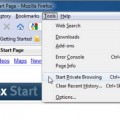How to Detect, Prevent and Stop Phishing Scams
Phishing is a way of attempting to acquire information such as usernames, passwords, and credit card details by masquerading as a trustworthy entity in an electronic communication. Scammers send a mass email to every address they can find. Typically the email will appear to come from a bank or financial institution, asking you to update your information for some reasons and providing a link that you can click to do so. Unfortunately, the link provided does not take you to the bank’s website. Instead, you’ll be submitting your information to a website run by the scammers.
Phishing scams are now a part of everyday life, we must always be careful of every sites we visit and link we click so that we don’t fall victim to phishing. Today we would like to share with you 3 useful ways to detect, prevent and stop phishing scams. Hope you can find them useful.
(Image Source: Digitaltrends.com)
1. Use a Custom DNS Resolution Service
With DNS resolution service we can access all the sites that we go to and It’s come with every Internet service provider. The bad news is, aside from name resolution, the DNS servers at ISP do nothing else. And that’s where custom and independent DNS companies come in place, providing more security resolutions such as filtering sites based on content and malware concerns.
Among many DNS resolution services out there, OpenDNS is one of the popular and reliable services that worth your attention.
2. Use Web Browser’s Phishing Protection
Phishing protection is built in most of the popular web browsers like Mozilla Firefox, Google Chrome and Internet Explorer. It works by checking the sites that you browse to against a list of known phishing sites. This list is automatically downloaded and regularly updated within the browser when the Phishing protection feature is enabled. You can find some useful information below to enable the Phishing protection or configure the settings in your browser.
- Firefox Phishing and Malware Protection
- Using phishing and malware detection – Google Chrome
- How to turn the Internet Explorer Phishing Filter or the SmartScreen Filter on or off
3. Use Websites to Check Links
If you’re given a link but you’re not sure about clicking it, you can copy and check it through some websites as follows:
These web tools will generate a site report telling you whether there’s something wrong about the site you want to visit.
Tags: how to, privacy & security, tips & tricks










































